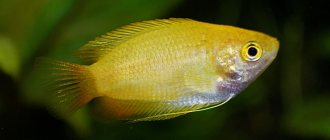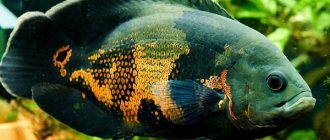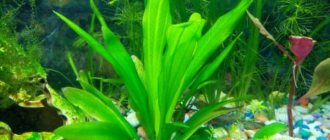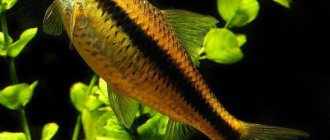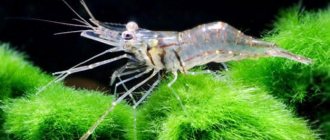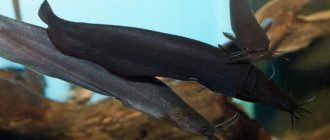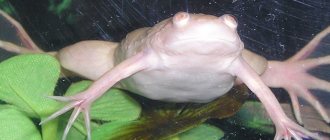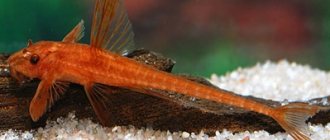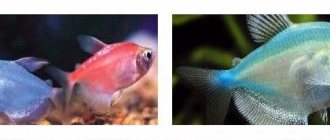Aurelia jellyfish, also known as eared jellyfish, is a widespread marine inhabitant. It can withstand significant fluctuations in temperature and salinity of water, so it is found in tropical and temperate zones, as well as in cold Arctic seas. These sea creatures live both in coastal waters and far from the coast. Often you come across solitary animals, but sometimes you can see huge groups of them.
Aurelia jellyfish (Latin: Aurelia aurita) belongs to the type of coelenterates or cnidarians and the class of scyphoids. This species belongs to the order of disc jellyfish, which includes about 50 other species, some of which are large in size, up to 2 m in diameter. Some representatives of the order of disc jellyfish inhabit not only the seas, but also the open ocean.
general description
In aurelia, the umbrella is flat and can reach 40 cm in diameter. Since it is based on a non-cellular substance (consists of 98% water), it is completely transparent. This quality also means that the weight of these animals is close to the weight of water, which makes swimming much easier.
It should be noted that the aurelia jellyfish has a very interesting structure. So, along the edge of her umbrella there are tentacles - small, but mobile. They are very densely packed with a huge number of stinging cells.
This jellyfish has a quadrangular mouth with 4 movable blades at the edges. Their contraction (they are also covered with stinging cells) makes it possible to pull prey to the mouth and securely capture it.
Cyanea
The Barents and White Seas are home to a cold-water giant, the cyanea; the umbrella of this huge jellyfish can reach 2 meters in diameter. The central part of the umbrella is yellowish and the edges are dark red. These jellyfish shimmer with a faint greenish color. The mouth opening is surrounded by sixteen wide oral lobes, crimson-red in color. Cyaneas have long tentacles up to 20-40 meters, light pink in color. When the cyanea spreads its tentacles, the trapping network of them covers 150 square meters.
Under the bell of these jellyfishes, haddocks, cod fry and other fish calmly swim, which under this dome find shelter and food - a variety of microorganisms living on the body of the jellyfish.
If a person touches the tentacles of cyanea, he will experience pain that goes away only after 40 minutes, in addition, quite serious lesions can occur on the skin.
Content
The issues of keeping jellyfish are somewhat specific. Initially it's about aquariums. For jellyfish, special containers are needed to ensure a smooth circular flow. This allows animals to move calmly without fear of any collisions. This is important because the aurelia, or eared jellyfish, has a very delicate and soft body that is easily damaged.
It is necessary to ensure the correct flow speed, which should allow animals to “soar” without problems in the water column. Only in this case there should be no danger of harm to their bodies.
The specificity also lies in the fact that for jellyfish in aquariums the use of aeration is absolutely excluded. This is explained by the fact that air bubbles can end up under the dome of the animal, get stuck there and then pierce it, which is very dangerous and can lead to the death of the jellyfish.
They don’t need any special lighting; basically, simple lighting is enough.
Also note that there is no need to filter the water. As a rule, it is enough just to regularly change the water so that its quality always remains at the proper level. If there is no desire to constantly update the water, you can also install a life support system. It is important to take proper care to protect the animals. Because they can be pulled into intake devices.
In addition, it must be taken into account that the aurelia jellyfish must live in a fairly spacious aquarium, since it needs the ability to freely extend its tentacles to their full length.
Internal structure
These invertebrates are structured quite simply. They do not have any hard skeleton. Their body consists of a gelatinous jelly-like mass called mesoglea. It is covered with denser epidermal cells. The eared jellyfish moves with the help of muscle fibers. The continuous contraction of the dome ensures its movement and creates a current of water that drives zooplankton into its mouth.
The mouth leads to the throat and then to the stomach. From it, food is directed into 8 radial channels, after which it enters the annular channel, and then undigested residues return through branching channels to the stomach and are excreted through the mouth. Food moves through the digestive tract thanks to the work of its flagellar epithelium.
Reproduction
Jellyfish aurelia is dioecious. Thus, the testes of males have a milky white color, they are clearly visible: they are small half rings in the body of the animal. Females have violet or red ovaries, which are also visible in the light. Therefore, by the color you can understand what gender the jellyfish is. Aurelians reproduce only once during their life, and then die. Their main distinguishing feature is considered to be the manifestation of care for their own offspring (which is not characteristic of other species).
It is worth noting that fertilization of eggs, as well as their further development, occurs in special pockets. Eggs enter them through gutters from the mouth. After fertilization, the egg divides into 2 parts, each of which is subsequently also divided in half, and so on. Due to this, a single-layer multicellular ball is formed.
Some of the cells of this ball get inside, which can be compared to pressing a rubber ball. Because of this, a two-layer embryo appears.
It can swim thanks to the large number of cilia that are located on its outer part. The embryo then becomes a larva, which is called a planula. She just floats for a while and then falls to the bottom. It is attached at the front end to the bottom. Quite quickly, the rear end of the planula is transformed: a mouth appears in this place, and tentacles are also formed. And it becomes a polyp, from which small jellyfish are subsequently formed.
How to determine the sex of Aurelia?
No complications! Like races according to the size of the oral cavities. In females, the blades are somewhat larger because they contain chambers in which the larvae develop. In heterosexuals, sperm and eggs mature in the gonads in the pouches of the stomach. Males release mature sperm through their mouths into the surrounding water. From which they penetrate into the brood chambers of females. In the latter, fertilization of eggs occurs followed by their development. Then the fully formed planula larvae leave the hatching chambers and swim in the water column for several days. Then, having attached to the substrate, the larva transforms into a single polyp (scyphistoma), which actively feeds, growing larger and larger in size and acquires the ability to multiply endlessly, budding off daughter scyphists. With the onset of spring, the process of transverse division begins - strobilation (one of the types of asexual reproduction, in which new individuals are formed through the rearrangement of the body of the parent individual. In polyps, strobilation is characteristic of representatives of scyphonds and cubozoans) jellyfish larvae - ethers - are formed. In appearance, they look like transparent stars with eight rays, which lack marginal tentacles and oral lobes. The ethers break away from the scyphist and float away, turning, in fact, into jellyfish by mid-summer.
Future life
Jellyfish lead a pelagic lifestyle. And they are most often found in surface waters both near the coast and far from them. Sometimes they form entire clusters. Aurelia long-eared is a eurybieptic species. Withstands both temperature fluctuations and water salinity. That's why they are widespread. Her food is always, as they say, at hand. These are small zooplankton. The dome of the jellyfish smoothly contracts and drives zooplankton towards the mouth lobes. Their lower edge is seated with short mobile tentacle-like outgrowths containing stinging cells. With their help, food is caught, paralyzed and sent straight to the mouth. At one time it was believed that Aurelia eared was not dangerous to humans. But recently there have been cases of quite severe burns in the Gulf of Mexico and off the coast of Great Britain. There, signs are posted on the beaches warning about the danger of Aurelia honey. As for the Russian shores of the Black or Azov Seas, no special incidents associated with this type of jellyfish have been recorded near them. And if in some cases there were burns, they quickly went away, as if you had accidentally been burned by nettles.
The structure of the jellyfish Aurelia
Don't let the goodness go to waste!
At least that’s what they think in the countries of Southeast Asia and specifically in China, Thailand, Indonesia, Korea, etc. An amazing example to confirm this fact is that in 2001, Japan imported more than ten tons of edible jellyfish, including aurelia. eared. The Land of the Rising Sun satisfies its needs for this delicious product through Indonesia, Malaysia, Myanmar, the Philippines, Singapore, and Vietnam. In total, more than 320 thousand tons of jellyfish in different types are eaten in the world every year. Even the US state of Georgia exports this exotic product. And China even grows jellyfish in artificial reservoirs, then releases them into the sea for food and catches enough grown individuals, some of which will not fit in a large bucket. At the same time, the country not only exports the delicacy to other countries, to Japan, for example, but also offers it for food to compatriots. And this has been happening for over 1700 years! What kind of dishes are prepared from jellyfish! Salads that are even served to airline passengers; sushi in Japan, noodles in Thailand and, not surprisingly, ice cream there, for which jellyfish are first soaked in milk, then dried and ground into powder. And students from the city of Obama developed a recipe for making real candies from jellyfish. Alas, in Europe or here in Russia, jellyfish are not eaten. But in vain: they contain so many microelements beneficial for health that you can simply be endlessly surprised - the entire periodic table, and in large quantities: after all, these sea creatures pass through themselves per day tons of water, which contains these microelements, and quite a lot of them remain in organism. Note that on the same coast of Anapa the beaches are considered healing. And not only because in the off-season, and sometimes even in the summer, they are literally shoveled by storms and enriched with sea salts. Microelements are brought into the sand by kamoka (seaweed) and, of course, by jellyfish washed ashore, which under the hot sun turn into an integral part of the sand. And it effectively treats ailments of the musculoskeletal system, radiculitis, rheumatism, cardiovascular and other diseases. The beaches of Sochi, Gelendzhik, Tuapse, Taman are considered therapeutic, be they sandy or pebbly or rocky: all of them. And finally about Aurelia - Eared briefly about interesting facts from the life of jellyfish.
Immortal jellyfish
Yes, yes, there is one! From the hydromedusa family. Its full name is Turritorsis Nutricula. Upon reaching adulthood, the jellyfish sinks to the bottom of the sea or ocean and transforms into a polyp. New formations develop on it, from which jellyfish are born. Revivals can continue indefinitely, the only thing that can stop them is a predator that will attack and eat a unique sea creature.
Watch out for some jellyfish!
The very first of them is the sea wasp. It is found off the coast of Australia and Indonesia. Almost transparent and therefore invisible in the aquatic environment. Fifty centimeters in diameter. She has twenty-four eyes, six dozen tentacles. Sees the victim perfectly. Can sting in several places at the same time. In three minutes it can send up to sixty people to the next world! The poison of Physalia Portuguese is dangerous for humans. In appearance it resembles a boat under sail. But it’s better not to come into contact with her. It is interesting that among these sea creatures there are simply incredible sizes. For example, Cyanea. Imagine - 37 meters long or the longest creature on the planet. True, its bite is not fatal, it is more like a bee's. But it may well cause a painful shock, an attack of terrible allergies. When traveling near the sea coast, we recommend staying away from jellyfish such as Sea Nettle, which lives in the waters of North America, the Atlantic and Indian Oceans. Irukandji - in Australia and Oceania. Lion's mane - in all the northern seas of the Pacific and Atlantic oceans, Pelagia nocturnal - in the Red and Mediterranean seas, the Atlantic and Pacific oceans, the already known corner - the Black and Azov seas, the Middle and Western parts of the Atlantic Ocean, in the waters of China and California. Jellyfish Alatina alata - between the Atlantic and Pacific oceans, off the coast of Pakistan and India. Nomura, which lives off the coast of Russia, Korea, Japan and China, is also dangerous to humans.
Interesting Facts
Jellyfish aurelia is often used in medicine. Laxatives and diuretics were produced from it in the Middle Ages. And today, from the poison contained in the tentacles of animals, drugs are produced to regulate blood pressure and treat various pulmonary diseases.
Farmers in the Caribbean use physalia poison as a poison for rodents.
Jellyfish allow you to effectively cope with stress. They are bred in special aquariums in Japan. The leisurely, smooth movements of animals calm people, but keeping them is very expensive and troublesome.
Luminophores isolated from jellyfish are used for biochemical analysis. Their genes were transplanted into various animals, for example, rodents, due to which biologists were able to see with their own eyes previously inaccessible processes. Because of this action, the rodents began to grow green hair.
Some jellyfish are caught off the coast of China, where their tentacles are removed, and the carcasses are kept in a marinade, due to which the animal turns into a cake of thin, delicate, translucent cartilage. In the form of such cakes, animals are taken to Japan, where they are carefully selected for quality, color and size and used in cooking. So, for one salad, the jellyfish is cut into small strips 3 mm wide, they are mixed with herbs, stewed vegetables, and then poured over with sauce.
Robot jellyfish also appeared there. They, unlike real animals, not only swim beautifully and slowly, but can also “dance” to music if the owner wishes.
Lifestyle
The natural habitat of eared aurelias is the coastal waters of the seas of the temperate and tropical zones. The most numerous colonies of jellyfish can be found in equatorial stripes close to the coast, where they often form dense clusters of quite a large extent.
Aurelias are characterized by a pelagic lifestyle. In simple terms, they inhabit areas that are not in close proximity to the bottom. This marine inhabitant belongs to the eurybiont type of invertebrate animals , which means it is able to tolerate significant fluctuations in environmental temperatures and constant changes in the level of salt in the water, which explains its extremely wide distribution.
All scyphoid jellyfish, without exception, are poor swimmers. They only rise from the depths and sink again, freezing motionless for some time in the water column. After storms, the entire coastal zone is literally strewn with aurelias.
The main food of Aurelia is small zooplankton; smooth contractions of the dome with the marginal tentacles drive planktonic organisms to the oral lobes.
Until recently, this type of jellyfish was considered harmless to humans. However, in the Gulf of Mexico, cases of people receiving severe burns from contact with long-eared aurelia have been recorded. a jellyfish does not pose a serious threat to a person swimming . Unless its stinging cells can provoke minor irritation, comparable to what remains after contact with nettles.
What is made from jellyfish
In many Asian countries, edible species of jellyfish are used for cooking and are even considered delicacies. Only the domes, which are cleared of tentacles and mucus, are eaten. Since they are a highly perishable product, they are either cooked immediately or salted and then dried.
Jellyfish are a useful product because they contain valuable structural proteins, biologically active substances, lipids and microelements.
China, Korea, Burma, Vietnam and some other countries conduct industrial fishing of edible species of jellyfish for the further production of semi-finished food products and cosmetic products.
OCTOPUS
Behavior
The eared jellyfish drifts in huge colonies closer to the surface of the water. There, Aurelia can find food consisting of larvae and plankton. When the sea warms up, the victim rises to the top on its own. Stinging cells act as weapons, striking prey with poison. After which the oral lobes capture food and place it in their opening. Digestive enzymes are then released from the intestines.
Food that has not been digested is brought to the surface through the mouth. But its poison is not dangerous for all creatures. For example, tiny fry of the pilot fish find refuge between the tentacles of the Aurelia. They are not afraid of the stinging glands of the jellyfish. Often they get leftovers from their owner's food.
What to do if you are stung by a jellyfish
Signs of contact with the poisonous tentacles of an animal are burning, sharp pain and redness of the skin. The following actions will help reduce the consequences of jellyfish burns:
- First of all, it is necessary to remove the remaining spikes with neurotoxins from the surface of the skin. To do this, the burn site is first washed with sea water (fresh water will destroy the thorns and the remaining poison will enter the skin), and then wiped with a terry towel or thick cloth. When performing these manipulations, you should not touch the affected skin with your hands.
- Reddened areas are treated with hydrogen peroxide.
- If swelling occurs, apply ice.
- If allergic reactions occur, antihistamines should be taken.
If the condition continues to worsen, you should seek medical help.
FISH DROP
